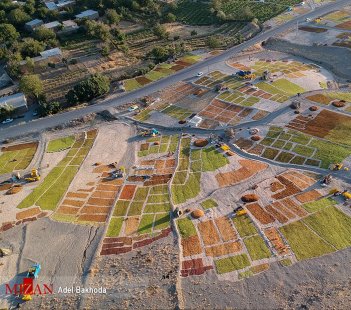
Bunches of grapes are handpicked by field workers and placed on paper trays, which are laid out on the ground between the vine rows. To provide a good surface for the trays, the soil between the rows is leveled.
All the important points about raisins
Depending on the weather, the grapes (some of the varieties of grapes to produce Iranian raisins are Asgari, Pikami, Yaghooti …) are allowed to dry on the trays for two to four weeks. During this time, the moisture content of the grape is reduced from 75% to under 15% and the color of the fruit changes to a brownish purple. At night, the trays are rolled to minimize the accumulation of sand and protect against raisin moth infestation. The paper trays are embedded with a compound, which kills insects that can damage the grapes as they dry. After the fruit is dried, the paper trays are rolled up around the raisins to form a package. The rolls are gathered and stored in boxes or bins before being transported by truck to a processing plant.
When the rolls of fruit arrive at the manufacturing plant, they are emptied out onto wire screens and shaken to remove dirt and other unwanted debris. They are also inspected to ensure that they meet previously determined specifications.
Based on their quality, the raisins are graded as either standard or substandard. Only the standard graded raisins can be immediately used.

Quality Control of Raisins
Quality control is an important part of each step in the raisin making process. While the grapes are growing, they are checked for ripeness by squeezing the juice from a grape and using a refractometer. This allows the growers to determine how much sugar is in the grape. They are also tasted and their weight per volume is measured to give a measure of the quality of the fruit.
During picking, workers are careful not to place bunches with insects or mold on the trays. They also try not to break berries as the liquid will attract insects. Knives are used to cut down the grape bunches to prevent damage.
At the factory, the raisins are thoroughly inspected. They are also subjected to a variety of laboratory analyses to ensure the production of a consistent, high quality product.






User comments